Sierra Jenkins Was Leaving Norfolk Bar
Homepage photo: Creative Action Network poster design by Lyla Paakkanen
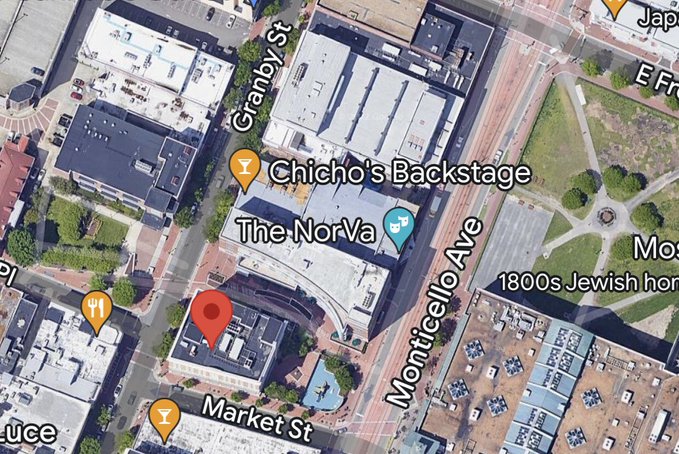
Sierra Jenkins Was Leaving Norfolk Bar
‘Two people were killed and three others injured during an early morning shooting Saturday outside a downtown Norfolk restaurant and bar,” (check for latest version) Jane Harper reported Saturday for the Virginian-Pilot in Norfolk. “Among the dead was 25-year-old Virginian-Pilot reporter Sierra Jenkins, who was caught in the gunfire.
“The incident happened shortly before 2 a.m. outside Chicho’s Pizza Backstage, a popular restaurant and bar on Granby Street adjacent to Tidewater Community College’s downtown Norfolk campus.
“Manager Rory Schindel said bartenders had announced last call for drinks and turned up the lights at about 1:30 a.m. Customers were starting to leave the business when an argument began outside. Soon afterward, shots rang out.
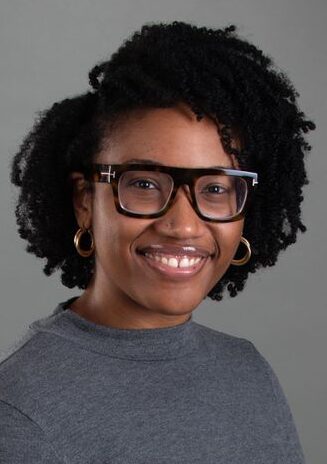 “Jenkins (pictured) was leaving the bar when she got caught in the gunfire, Schindel said. She was rushed to Sentara Norfolk General Hospital, where she later died.
“Jenkins (pictured) was leaving the bar when she got caught in the gunfire, Schindel said. She was rushed to Sentara Norfolk General Hospital, where she later died.
“Portsmouth resident Devon M. Harris, also 25, was pronounced dead at the scene, according to police. Three other men were wounded, including one who suffered life-threatening injuries.
“Police have not announced any arrests in the shooting.
“Jenkins’ father, Maurice Jenkins of Virginia Beach, described his daughter as a sweet, caring and hard-working young woman who loved being a journalist. She just turned 25 on March 13 and was the oldest of three siblings.
“Jenkins grew up in Norfolk and graduated from Granby High School. She earned a bachelor’s degree in journalism from Georgia State University in December 2019 and worked as an intern at Atlanta Magazine and CNN before joining The Pilot in December 2020. She just got her first apartment in Virginia Beach about a month ago after living with family, her father said.
“ ‘She wasn’t much of a going-out kind of person at all,’ Maurice Jenkins said. ‘But she had a friend visiting from out of town who wanted to go out.’
“The two had been friends since middle school and Jenkins was godmother to her friend’s daughter.
“Jenkins initially was hired by The Pilot to cover breaking news and later became an education reporter. She was scheduled to work a shift on the day she died. When editors were unable to reach her early that morning to have her to cover the shooting, they asked another reporter to fill in for her. A short time later, they learned Jenkins was among those killed. . . .”
Samantha-Jo Roth and David Mendez reported in January for Spectrum News, “The last two years have seen record-breaking numbers of gun deaths in the U.S. according to new data from the Centers for Disease Control and Prevention. In 2020, more than 45,000 people died of gunshot wounds — up 14 percent from 2019, the previous high water mark for gun violence.
“Last year saw another record broken. According to the Gun Violence Archive, more than 20,000 homicides were caused by guns in 2021, the most since the non-profit began tracking shootings eight years ago.”
Updating March 20:
Gillian Brockell added for The Washington Post:
“Jane Harper, a colleague of Jenkins’s, said on Twitter that Jenkins was scheduled to work Saturday, and Harper was asked to fill in when editors couldn’t reach Jenkins. She soon ‘found out why,’ she said, and ended up writing the story about her co-worker’s death.
“In a phone interview with The Washington Post, her editor, Brian Root, said Jenkins believed passionately in journalism. She also really wanted to make a difference in her community and with her new beat, where she was covering new Republican governor Glenn Youngkin’s plans for Virginia schools, student learning loss during the pandemic and big changes at local colleges.
“ ‘I have been very fortunate in my career that I’ve worked with several people who went on to become rock stars in our business, so I know them when I see them, and Sierra was on the way to becoming a rock star,’ Root said. ‘It’s all about willingness and work ethic, and good god, she had that. And it hurts to talk about her in the past tense.’
“Police said anyone with information about the shooting should contact the Norfolk Crime Line at 1-888-LOCK-U-UP or submit a tip through the mobile app P3Tips.”
- ABC News: Latest coverage of Gun Violence
- Michael Dowling and Chethan Sathya, Scientific American: Gun Violence Is an Epidemic; Health Systems Must Step Up
- Kristen A. Graham, Philadelphia Inquirer: Too many lockdowns to count: Gun violence has touched everything at one Philly school (Feb. 23)
- Malik Russell, The Health Alliance for Violence Intervention: National Experts Outline Path Towards Ending Gun Violence (Feb. 9)
- The Health Alliance for Violence Intervention, National Press Club: 21st Century Solutions to Community and Gun Violence (video) (Feb. 4)
- WTKR, Norfolk, Va.: 2 people, including Virginian-Pilot reporter, killed in quintuple shooting in Downtown Norfolk
Whose City Gets to Be Called ‘Black’?
March 13, 2022
Just 3 With Black Majorities; 4 Are Majority Latino
In South America, Tales of Anti-Haitian Racism
Black Journalist Able to Safely Flee Ukraine
$2 Million Gift to Digitize Black Press Archives
N.Y. Amsterdam News Forms Investigative Unit
Police-Misconduct Claims Cost Us $3.2 Billion
NAHJ Names David Peña Jr. as Executive Director
Native Journalist Gets Settlement in Free-Press Case
Short Takes: Renee Poussaint services; John X. Miller; The Undefeated; Britni Danielle; Jin Ding and the Center for Public Integrity; Lalo Alcaraz; Ray Billingsley, Barbara Brandon-Croft and Ricahrd Prince; jury sides with photojournalist over police; white former meterologist sues; same-sex Essence cover; Fin Gomez
Historic Black newspapers in Montana; George Polk Award winners; Cal Thomas and Black and Hispanic journalist associations; Amy DuBois Barnett; Merriman Smith; Serena and Venus Williams; Kanye West and Black media investments; Tegna sells itself; Revolt studio may produce news; Marcus Yam; reporting on threats to U.S. democracy; NABJ and Black News Channel; series featuring T. Thomas Fortune; “America’s Black Forum”; Andy Alford; detained in Ethiopia; skewed coverage of business in Africa.
Homepage photo: Nina Simone’s album “Baltimore,” 1978
Support Journal-isms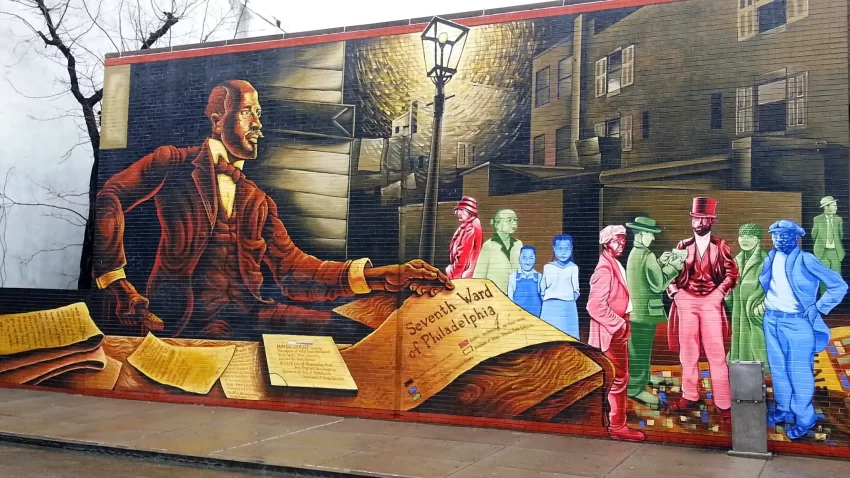
Just 3 With Black Majorities; 4 Are Majority Latino
On Feb. 15, the Philadelphia Inquirer unveiled what it considered a no-holds-barred account of its history of racism, under the headline “Black City, White Newspaper.”
The National Newspaper Publishers Association, the trade organization for the Black press, followed on Feb. 24 with a story asserting that “The papers in the predominantly Black cities of Baltimore, Philadelphia and Kansas City studied and confronted decades of negative news coverage on Black communities.“
Actually, the Census Bureau lists only one of those cities as predominantly Black — Baltimore.
Baltimore is 62.4 percent Black.
Philadelphia is just 42.1 percent Black.
Kansas City, Mo., is only 28.2 percent Black.
We can’t say how those “predominantly Black” characterizations saw the light of print. Perhaps it was because in Philadelphia, though not a majority, Blacks are the largest ethnic group.
Gabriel Escobar, editor of The Philadelphia Inquirer, said he would refer the question to Errin Haines, who edited the Inquirer project, “A More Perfect Union.” Journal-isms also asked about the comparison between a city’s population and the newspaper’s demographics, since newspapers don’t serve only those within the city limits. Haines did not respond.
Nor did Benjamin Chavis, president of the NNPA. On the NNPA’s Black Press USA site, which distributes stories to Black newspapers around the country, is a gaffe in an obituary of Askia Muhammad, the multimedia columnist, reporter and news director who died Feb. 17. The story says that the Nation of Islam’s Louis Farrakhan regularly appeared on Muhammad’s weekly jazz show on Washington’s WPFW. Actually, Muhammad’s show routinely played a snippet of a decades-old speech by Malcolm X.
So if Philadelphia and Kansas City aren’t really Black-majority cities, which are?
William H. Frey, a prolific demographer, wrote about the 2020 Census results last October for the Brookings Institution, where he is a senior fellow.
He homed in on the 2020 Census, writing under the headline, “Big cities grew and became more diverse, especially among their youth.“
Crunching the figures, Frey came up with three major majority-Black cities:
- Detroit, 77.2 percent
- Memphis, 61.32 percent
- and Baltimore, 57.3 percent
His figures put Philadelphia at 38.3 percent Black. The numbers differ from those of the Census Bureau, he told Journal-isms, because “The census number. . . includes Hispanic Blacks. My analysis looks at NonHispanic members of each racial group so that when The Hispanic category is part of the analysis — all groups (mutually exclusive) add to 100 percent.”
Four major cities have populations that are 50 percent or more Latino:
- El Paso, Texas, 81.2 percent
- Miami, 70.2 percent.
- San Antonio, Texas, 63.9 percent
- and Fresno, Calif., 50.5 percent
Among Asian Americans, Honolulu had a population 52.3 percent Asian.
There were no Native American cities that met the 50 percent threshold, though if reservations were counted separately, they would qualify.
Journal-isms asked Frey if he had anything to add that would benefit the news media. “I think the only thing I can add (or emphasize) from my post is that we need to be aware of shifts in city make-up now largely being triggered by rising Latino or Asian growth,” he said.
“White and black flight are important components of many city changes, giving Latinos a bigger slice of growth and the population. Another item I tried to emphasize is the even more diverse child populations of these cities — foreshadowing what their older population will look like in years to come.”
So what makes a “Black city”? Back in 2015, after Washington, D.C., formerly known as “Chocolate City,” had lost its Black majority as a result of gentrification, about 225 residents met at the central library to discuss the consequences. The audience was evenly split between Black and white.
The consensus was that D.C., now down to 40.9 percent African American, remained culturally Black. In fact, one white resident told the group, that was part of its attraction.
- Samuel Benson, Politico: Census undercounted Black people, Hispanics and Native Americans in 2020
- Fabiola Cineas, Philadelphia magazine: 25 Stats That Show How Black People Are Really Doing in Philly (Feb. 14, 2020)

In South America, Tales of Anti-Haitian Racism
In a gripping piece of investigative radio journalism, “Latino USA’s” Maria Hinojosa, microphone in hand, travelled with Haitians trying to find a new place to live in South America and Mexico, only to find racism at nearly every turn.
U.S. policies make the problem worse, Hinojosa reported on her public radio program. Some Haitians, she reported, even sewed their mouths shut to call attention to their situation.
“On the third installment of our award-winning series ‘The Moving Border,’ we return to Tapachula, Mexico, nearly two years after our last episode — and the start of a worldwide pandemic,” Hinojosa and Julieta Martinelli wrote Friday in the story accompanying the podcast.
“This episode explores how things have — or have not — changed for asylum-seeking migrants in Mexico in the first year of the Biden presidency.
“We travel to a small town in the state of Oaxaca where we meet up with a ‘caravan’ of families that’s spent weeks on their feet, walking towards the U.S., banded together for safety. In the news, we hear reports that strike fear into listeners about these caravans’ intentions, but at a park where families sleep together crowded over hard sidewalks, we encounter a very different image of what compels these large groups of strangers to move as a unit.
“And we witness how the make-up of the asylum seekers themselves is also shifting.
“There are now more Haitian migrants arriving in Tapachula than there were two years ago, according to COMAR, The Mexican Commission For Refugee Assistance, which is tasked with processing asylum petitions in Mexico.
“Last year, the majority of requests for asylum were actually filed by Haitian nationals, who became the number one petitioners for the first time ever in Mexican history.
“Then, we travel further south: to the Darién Gap, at the border of Colombia and Panama. There we embark on a difficult journey to try and understand the particularly challenging conditions that Black migrants are facing on their long journey through South America as they try to reach the United States.”
“The Moving Border” was co-produced with Futuro Unidad Hinojosa Investigations, which receives support from the W.K. Kellogg Foundation, Chan Zuckerberg Initiative and Hispanics in Philanthropy. Hinojosa and Diane Sylvester are executive producers.
- Ralph Tedy Erol and Gessika Thomas, Reuters: Haiti police open fire on demonstrators, one journalist killed (Feb. 23)
- Liz Robbins, Columbia Journalism Review: Know the Risks: A Guide for Journalists on Quoting Immigrant Sources (Feb. 18)
Alongside the BBC’s two doyennes of war reporting, @OrlaGuerin and @bbclysedoucet, Myrie is the BBC’s man in Kyiv, anchoring the coverage from a rooftop and staying in a subterranean shelter pic.twitter.com/N49ztkpavj
— The Sunday Times (@thesundaytimes) March 5, 2022
Black Journalist Able to Safely Flee Ukraine
The BBC’s Clive Myrie, one of the few Black journalists reporting from Ukraine, returned to England describing a harrowing 17-hour drive from Kyiv to the Romanian border and receiving praise for his work, including a comment from a member of Parliament, senior Labour MP Chris Bryant, that Myrie deserved knighthood.
In a series of tweets, Myrie reflected on families who were fleeing for their lives after being shelled, Rose Hill reported March 6 for the Mirror.
“It was a long, day of driving and queuing to get out of Kyiv. Imagine having to leave all you know in a hurry because you’re being shelled,” Myrie wrote.
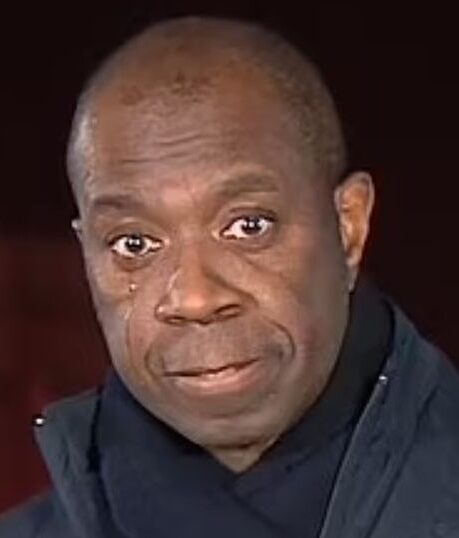 “What do you pack? Do pets come too? It’s freezing cold and you pray those in neighbouring countries will welcome you, not despise you!
“What do you pack? Do pets come too? It’s freezing cold and you pray those in neighbouring countries will welcome you, not despise you!
“My thoughts are with the one million who’ve fled Ukraine because they might be killed. The millions who fled Syria and many other millions escaping repression, poverty, war.
“They all pray they’ll be welcomed in other countries as human beings. That’s all they ask.”
Myrie was born in Bolton, Lancashire, England, in 1964, Emily Martin wrote in a profile for Wales Online March 3, updated Tuesday. “His parents are Jamaican immigrants who came to the UK in the 1960s and his mother worked as a seamstress, making garments with high-profile fashion designer Mary Quant. His father was a factory worker. . . . Myrie began working for BBC Local Radio as a reporter and in 1996 he became a foreign correspondent, reporting from more than 80 countries over his long career so far. . . . He also [fronts] BBC Two quiz show Mastermind and Celebrity Mastermind.”
As the invasion began, viewers reported seeing a tear visibly streaking down Myrie’s face. (pictured, credit: BBC) “Dozens took to social media to share their shock at the scene,” the Daily Mail reported.
- Cyril Josh Barker, New York Amsterdam News: Meeks leads group to Ukraine border
- Greg Bowens, Deadline Detroit: We see a Black Starr from Detroit and know: ‘It’s a freedom thing — we got to care about Ukraine’
- John Eggerton, Broadcasting & Cable: CPJ Offers Advice for Journalists Covering Russian Attacks (Feb. 24)
- Paul Farhi, Washington Post: RT was Russia’s answer to CNN. Now its pro-Putin spin on Ukraine is sparking new outrage. (Feb. 26)
- Tanu Henry, California Black Media: California Black Clergy, Political Leaders Condemn Racism in Ukraine
- Kieran Isgin, Manchester Evening News, U.K.: BBC’s Clive Myrie hits back after viewers question why he had been sent to Ukraine
- Kenya Digital News: Kenya’s Ambassador to U.N. Martin Kimani’s Speech on Ukraine-Russia Crisis Wows the World!! (video) (Feb. 22)
- Clive Myrie, BBC News: The Ukrainians I met are not about to give up
- Alexis Okeowo, New Yorker: Europe’s Other Migration Crisis (March 2)
- Rédaction Africanews: Russia-Ukraine conflict: Ghanaian medical students in Ukraine to continue studies in Grenada
- Elliot Smith, CNBC: African leaders condemn Russia, but some remain silent as Moscow’s influence hits home (March 3)
- Terrell Jermaine Starr: Twitter feed
- André van Wyk, allafrica.com: ‘This is Not Our War’ – African Journalists Question U.S. State Dept on Continent’s Position in Ukraine-Russia Conflict (March 4)
Nikole Hannah-Jones and Ta-Nahesi Coates vigorously argued that the central question should be “are we reflecting community or are we reflecting power” with our journalism. (Credit: Knight Foundation)
$2 Million Gift to Digitize Black Press Archives
“The Howard University Moorland-Spingarn Research Center (MSRC) received a $2 million grant from the Jonathan Logan Family Foundation to support the preservation and digitization of the Black Press Archives, a newspaper collection of titles by Black journalists, editors and publishers,” the university announced.
“MSRC worked in partnership with the Center for Journalism and Democracy to secure this critical gift, and the center will be committing additional funds to the project to ensure a significant number of publications in the Black Press Archives are available in an online repository for worldwide research.”
 Separately, journalist Nikole Hannah-Jones (pictured), founder of the center, announced that the unit will serve not only Howard, but other historically black colleges and universities.
Separately, journalist Nikole Hannah-Jones (pictured), founder of the center, announced that the unit will serve not only Howard, but other historically black colleges and universities.
The “center will serve to help students hone their investigative reporting skills and learn to do historically informed journalism in service of democracy and equality. With the center, Howard will be one of few journalism programs nationwide to offer courses with an investigative focus, Hannah-Jones says,” the university reported Feb. 22.
“ ‘We intend to create and to fund investigate reporting courses, create visiting professorships and bolster the student newspapers at [historically Black colleges and universities (HBCUs) that have] large journalism programs,” Hannah-Jones says, adding that the center will also fund technology upgrades for campus newspapers, faculty stipends, and student financial support. . . . The Center for Journalism & Democracy and the MSRC are currently fundraising to match the Logan Family Foundation grant. . . .”
The Center is advertising for an executive director. Hannah-Jones tweeted that the job pays upwards of $150,000.
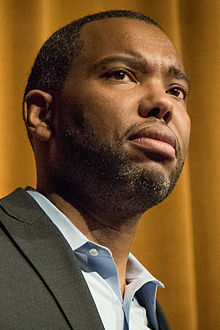 Hannah-Jones expanded on plans for the center at a Feb. 22 session of the Knight Foundation’s Knight Media Forum, held virtually this year. She joined writer Ta-Nehisi Coates (pictured), now the Sterling Brown Chair in Howard’s English Department, University President Wayne Frederick, and foundation president Alberto Ibargüen.
Hannah-Jones expanded on plans for the center at a Feb. 22 session of the Knight Foundation’s Knight Media Forum, held virtually this year. She joined writer Ta-Nehisi Coates (pictured), now the Sterling Brown Chair in Howard’s English Department, University President Wayne Frederick, and foundation president Alberto Ibargüen.
The Knight Foundation is investing $5 million in Howard, where Hannah-Jones is to be the inaugural Knight Chair in Race and Journalism. The MacArthur and Ford foundations, along with an unidentified donor, have committed $5 million each to the university, bringing the total to $20 million, Howard announced.
At the forum, Hannah-Jones and Coates vigorously argued that, as Hannah-Jones said, “objectivity” is often used to justify racially biased coverage, that the mainstream media viewed whiteness as “raceless” and that the central question should be “are we reflecting community or are we reflecting power?” with our journalism.
“We have fundamental differences in how we relate to power,” Coates said.
Frederick complained that Georgetown University, also in Washington, similarly had issues with mold on its campus (satirized here) but that Howard’s received the media attention. However, the issue of mold at Howard became part of a month-long protest that saw more than 100 students living in the Blackburn University Center, a student hub on campus, with dozens more, including a small group of faculty and alumni, pitching tents outside.
N.Y. Amsterdam News Forms Investigative Unit
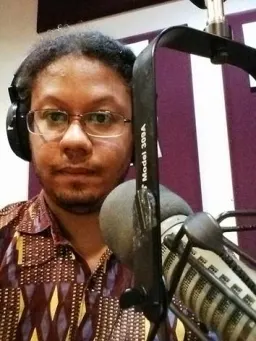 “The New York Amsterdam News recently announced the formation of a first of its kind investigative unit at a legacy Black newspaper,” the publication told readers Feb. 24. The Blacklight will produce long form and investigative journalism which will focus on Black and Brown communities in the New York region and beyond.
“The New York Amsterdam News recently announced the formation of a first of its kind investigative unit at a legacy Black newspaper,” the publication told readers Feb. 24. The Blacklight will produce long form and investigative journalism which will focus on Black and Brown communities in the New York region and beyond.
“The Blacklight unit will be led by the AmNews’ first Investigative Editor and longtime contributor Damaso Reyes (pictured).
“Reyes first appeared in these pages as a [high school] student and for more than 25 years has contributed stories and images from New York City as well as from areas throughout the United States, Rwanda, Tanzania, Indonesia and Europe. . . .
“First year funding for the unit is being provided by the Chan Zuckerberg Initiative and will provide capacity for The Blacklight to investigate the impact of COVID, and COVID misinformation on our communities. . . .”
After the Jan. 6 insurrection at the U.S. Capitol, Maggie Koerth, senior science writer at Five Thirty-Eight, explored what the data show about how right- and left-wing movements are policed. (Credit: YouTube)
Police-Misconduct Claims Cost Us $3.2 Billion
Alleged misconduct by more than 7,600 officers — from Portland, Ore., to Milwaukee to Baltimore — has more than once led to payouts to resolve lawsuits and claims of wrongdoing, according to a Washington Post investigation, Keith L. Alexander, Steven Rich and Hannah Thacke reported Wednesday for the Post online and in Sunday’s print edition. “The Post collected data on nearly 40,000 payments at 25 of the nation’s largest police and sheriff’s departments within the past decade, documenting more than $3.2 billion spent to settle claims.
“The investigation for the first time identifies the officers behind the payments. Data were assembled from public records filed with the financial and police departments in each city or county and excluded payments less than $1,000. Court records were gathered for the claims that led to federal or local lawsuits. The total amounts further confirm the broad costs associated with police misconduct, as reported last year by FiveThirtyEight and the Marshall Project.
“The Post found that more than 1,200 officers in the departments surveyed had been the subject of at least five payments. More than 200 had 10 or more.
“The repetition is the hidden cost of alleged misconduct: Officers whose conduct was at issue in more than one payment accounted for more than $1.5 billion, or nearly half of the money spent by the departments to resolve allegations, The Post found. In some cities, officers repeatedly named in misconduct claims accounted for an even larger share. For example, in Chicago, officers who were subject to more than one paid claim accounted for more than $380 million of the nearly $528 million in payments. . . .”
NAHJ Names David Peña Jr. as Executive Director
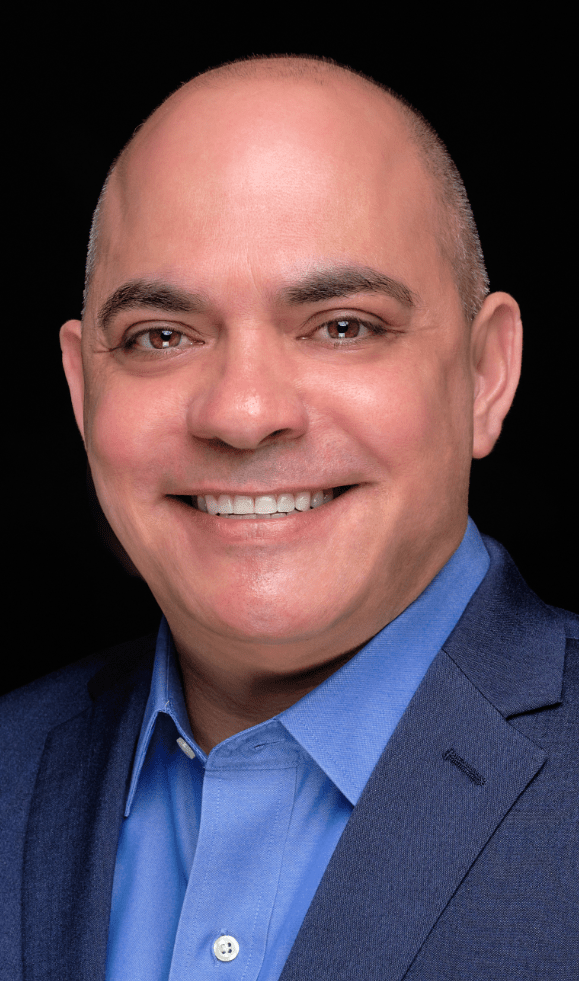 “The National Association of Hispanic Journalists (NAHJ) has selected David Peña Jr. (pictured), a national association and nonprofit leader from San Antonio, Texas, as its new executive director,” the association announced Feb. 22. “Peña will take the helm immediately.
“The National Association of Hispanic Journalists (NAHJ) has selected David Peña Jr. (pictured), a national association and nonprofit leader from San Antonio, Texas, as its new executive director,” the association announced Feb. 22. “Peña will take the helm immediately.
“A respected national executive, Peña has served as executive director of the National Hispanic Business Association, Hispanic Dental Association, president for College & Universities at ALPFA National, and president of The Austin Asian Chamber of Commerce. Peña’s civic involvement is as diverse as his work history. He has served on boards at the local, regional and national levels for numerous cultural, business, service and health organizations serving the general public, Asian, Hispanic and LGBTQ+ communities.”
The previous executive director, Alberto B. Mendoza, left last year to become managing director for the John S. Knight Journalism Fellowships at Stanford University.
- National Association of Hispanic Journalists: NAHJ National Board Appalled over Lack of Latino Journalists in CNN+ Lineup (March 2)
- National Association of Hispanic Journalists: NAHJ, Ethnic Media Services & California Black Media Urge Colleagues to Express Solidarity with Mexican Journalists (March 4)
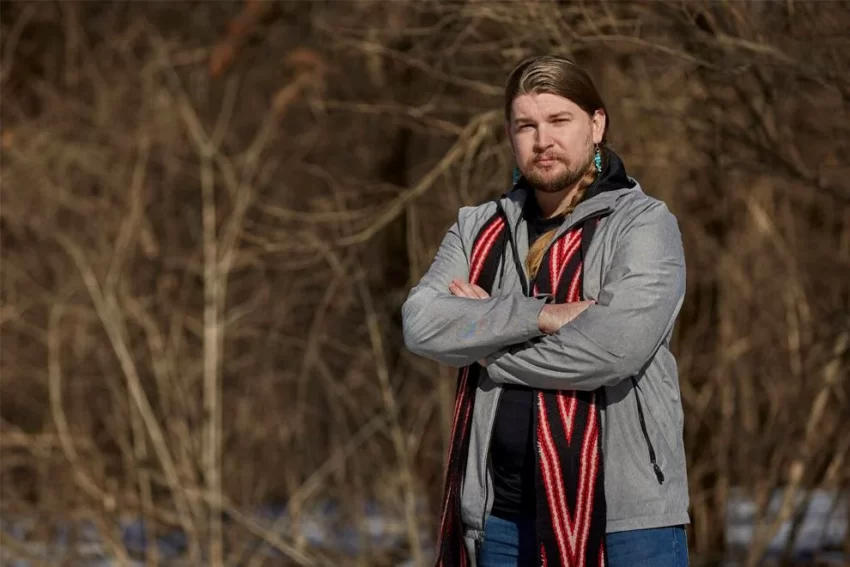
“I have plans to continue on to grad school, and hopefully gain some skills that are important for our tribal community and government and future sovereignty,” Nally said. “So, it might not necessarily be graduate school for journalism, but it’s still going to be a skill set that allows me to work within our community.”
Native Journalist Gets Settlement in Free-Press Case
The former editor-in-chief of the student newspaper at Haskell Indian Nations University in Kansas has won a settlement against the school and its previous president in a case that galvanized free-press advocates.
Haskell is required to pay $40,000 in legal fees, but Jared Nally, former editor-in-chief of The Indian Leader, awaits a Supreme Court decision that may alter the case’s outcome, Baileigh Mertens reported Feb. 23 for the University Daily Kansan at the University of Kansas.
As KUCR, the public radio station in Kansas City, reported last year, “The Native American Journalists Association has selected Haskell Indian Nations University’s student newspaper to receive the 2021 NAJA Elias Boudinot Free Press Award.
“The Indian Leader, the student publication at Haskell Indian Nations University, received the award for its battle with Dr. Ronald Graham, the university’s former president.
“During his tenure, Graham was accused by both faculty and students of suppressing free speech rights, after sending ‘directives’ to different members of the Haskell community.
“He ordered Editor-in-Chief Jared Nally to stop reporting on negative stories about the university and threatened to take action to stop it. Then, he sent out a similar directive to faculty members after they criticized university administrators on social media.
“With support from the Native American Journalists Association, the Foundation for Individual Rights in Education and the Student Press Law Center, the newspaper pushed back and Graham was ultimately removed from his post after a vote of no-confidence by the Haskell Faculty Senate. . . .”
Short Takes
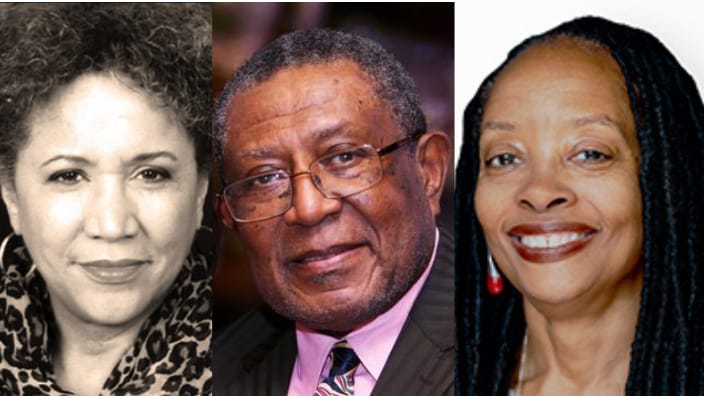 Services for former television anchor Renee Poussaint (left) who died March 5 at 77, are scheduled for Tuesday, March 22, at Plymouth Congregational United Church of Christ, 5301 N. Capitol Street, Washington, DC 20011. Visitation is to take place from 10 a.m. to 11 a.m., with the homegoing service at 11 a.m. This columnist wrote Friday about the passings of Black journalists Poussaint, Askia Muhammad and Valerie Boyd (right) for The Grio. Each “moved African Americans forward while building on the ancestors’ hopes, dreams and accomplishments,” the story said.
Services for former television anchor Renee Poussaint (left) who died March 5 at 77, are scheduled for Tuesday, March 22, at Plymouth Congregational United Church of Christ, 5301 N. Capitol Street, Washington, DC 20011. Visitation is to take place from 10 a.m. to 11 a.m., with the homegoing service at 11 a.m. This columnist wrote Friday about the passings of Black journalists Poussaint, Askia Muhammad and Valerie Boyd (right) for The Grio. Each “moved African Americans forward while building on the ancestors’ hopes, dreams and accomplishments,” the story said.
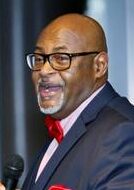 “John X. Miller (pictured, by Sharon Farmer), who has served as a top editor at a number of newsrooms and most recently was a senior editor at ESPN’s Undefeated, will be our new senior editor working with our talented business, features and sports teams and joining Mede Nix as our other senior editor,” Editor Katrice Hardy announced to staffers of The Dallas Morning News. She added, “In his role as senior editor for The Undefeated, ESPN’s multimedia platform that reports on the intersection of race, sports and culture, John has been instrumental in producing revelatory journalism that helped the digital start-up grow audience and its footprint substantially since it launched in 2016. . . .”
“John X. Miller (pictured, by Sharon Farmer), who has served as a top editor at a number of newsrooms and most recently was a senior editor at ESPN’s Undefeated, will be our new senior editor working with our talented business, features and sports teams and joining Mede Nix as our other senior editor,” Editor Katrice Hardy announced to staffers of The Dallas Morning News. She added, “In his role as senior editor for The Undefeated, ESPN’s multimedia platform that reports on the intersection of race, sports and culture, John has been instrumental in producing revelatory journalism that helped the digital start-up grow audience and its footprint substantially since it launched in 2016. . . .”
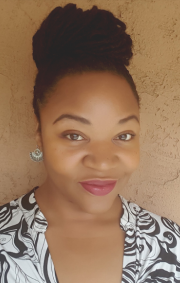 “ESPN has rebranded The Undefeated, which covers the intersection of race, sports and culture, and plans to expand the operation, “which will now go by the name … Andscape,” Brooks Barnes reported Feb. 28 for The New York Times. “It’s time to talk about Black and everything,” Raina Kelley, Andscape’s editor in chief, told Barnes. “Far beyond just sports and athletes.” On Monday, ESPN named Britni Danielle (pictured), formerly of Shondaland.com, as senior culture editor of Andscape.
“ESPN has rebranded The Undefeated, which covers the intersection of race, sports and culture, and plans to expand the operation, “which will now go by the name … Andscape,” Brooks Barnes reported Feb. 28 for The New York Times. “It’s time to talk about Black and everything,” Raina Kelley, Andscape’s editor in chief, told Barnes. “Far beyond just sports and athletes.” On Monday, ESPN named Britni Danielle (pictured), formerly of Shondaland.com, as senior culture editor of Andscape.
 “Jin Ding (pictured), an experienced journalism fundraiser, has joined the Center for Public Integrity’s leadership team as chief of staff, part of a strategy of hiring that has transformed one of the oldest investigative newsrooms into an organization whose staff is majority people of color,” the Center announced on Monday.
“Jin Ding (pictured), an experienced journalism fundraiser, has joined the Center for Public Integrity’s leadership team as chief of staff, part of a strategy of hiring that has transformed one of the oldest investigative newsrooms into an organization whose staff is majority people of color,” the Center announced on Monday.

- “One of the country’s first syndicated Latino cartoonists has received a top prize for editorial cartooning,” Patricia Guadalupe reported March 3 for NBC News. “Lalo Alcaraz, a Los Angeles-based political cartoonist, is the first Latino recipient of the prestigious [2022] Herblock Prize in recognition of his editorial cartooning and his ‘passion, dedication and brilliance’ in covering civil rights and other issues affecting U.S. Latinos. The $15,000 award announced Thursday by the Herb Block Foundation is named after the late Washington Post syndicated editorial cartoonist Herbert Lawrence ‘Herblock’ Block.”
- Ray Billingsley of “Curtis,” Barbara Brandon-Croft of “Where I’m Coming From” and this columnist were interviewed via Zoom for the digital site of KUSA-TV in Denver. They appeared with other cartoonists of color, including Lalo Alcaraz, Angelo Lopez and Marty Two Bulls Sr., at the Jan. 23 Journal-isms Roundtable. The half-hour KUSA interview took place Feb. 9 and remains online.
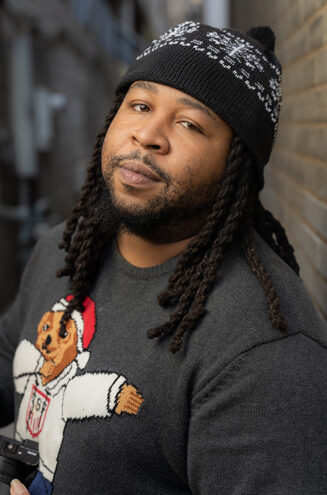 Albert Riley Jr. (pictured), “a 35-year-old freelance photojournalist who was working on his own accord, was accused of shoving an off-duty and plain-clothed officer around the neck and knocking her to the ground,” Kevin Haas reported Feb. 23 for the Rock River (Ill.) Current. “Then police said he resisted arrest. He countered that he was trying to protect his camera after the officer reached for it, and was trying to keep it from smashing against the ground when police tackled him from behind. The jury saw it his way and found him not guilty on both counts Thursday at the conclusion of a four-day trial that had been prolonged for 17 months. . . .”
Albert Riley Jr. (pictured), “a 35-year-old freelance photojournalist who was working on his own accord, was accused of shoving an off-duty and plain-clothed officer around the neck and knocking her to the ground,” Kevin Haas reported Feb. 23 for the Rock River (Ill.) Current. “Then police said he resisted arrest. He countered that he was trying to protect his camera after the officer reached for it, and was trying to keep it from smashing against the ground when police tackled him from behind. The jury saw it his way and found him not guilty on both counts Thursday at the conclusion of a four-day trial that had been prolonged for 17 months. . . .”
- “Dana Melancon, a former meteorologist for KFDM Channel 6 news, is suing Sinclair Broadcast Group for breaking Texas law by firing him because of his age and/or because of the color of his skin,” Kaitlin Bain and Meagan Ellsworth reported Feb. 22 for the Beaumont (Texas) Enterprise. “The 62-year-old, white Hardin County resident worked at the news station for nearly 30 years before he was ‘abruptly terminated’ last year, according to the original petition that has been filed in Jefferson County’s 172nd Civil District Court. . . . Melancon is now seeking at least $300,000 and back and future pay. . . .”
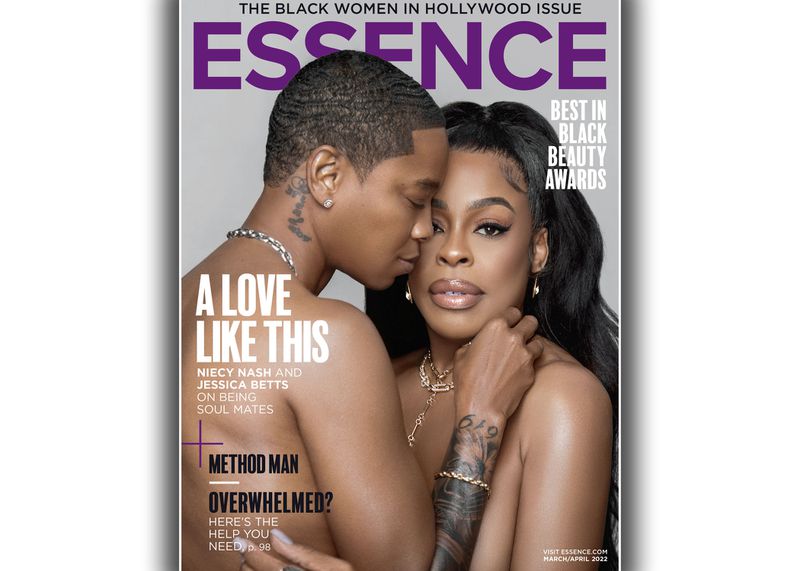
- “Niecy Nash is gracing the cover of Essence magazine again – this time, she’s making history,” Karu F. Daniels wrote Feb. 24 for the Daily News in New York. “The Emmy-winning actress and her wife Jessica Betts are the first same-sex couple to appear on the front of the iconic Black women’s magazine in its 52-year history. . . .”
 ‘CBS News has made a promotion within the company as White House producer Fin Gómez (pictured) has been named political director for the Network. Gómez starts his new position this week and will continue being based in Washington, D.C.,” Eduardo Razo reported Feb. 22 for Barrett Sports Media. He also wrote, “During his career, Gómez became the first Latino journalist to serve on the White House Correspondents Association’s board in its 108-year history. Furthermore, he’s a former national board member of the National Association of Hispanic Journalists.”
‘CBS News has made a promotion within the company as White House producer Fin Gómez (pictured) has been named political director for the Network. Gómez starts his new position this week and will continue being based in Washington, D.C.,” Eduardo Razo reported Feb. 22 for Barrett Sports Media. He also wrote, “During his career, Gómez became the first Latino journalist to serve on the White House Correspondents Association’s board in its 108-year history. Furthermore, he’s a former national board member of the National Association of Hispanic Journalists.”

- Anthony Wood, a doctoral history student at the University of Michigan and a native of Anaconda, Mont., wrote a 322-page academic study, “Black Montana: Settler Colonialism and the Erosion of the Racial Frontier, 1877-1930,” as a way of demonstrating the depth of diversity and the troubling politics of race in Montana, Darrell Ehrlick wrote Feb. 27 for the Daily Montanan. He also wrote, ” ‘The New Age,’ a newspaper published for the Black community in the state, based in Butte, Wood said was an unexpected discovery. The New Age’s pages show the Black Montana experience through a contemporary lens, with commentary on race relations throughout the country, but also observations about Montana. . . . For example, the topics in the newspaper give contemporary accounts of mining and labor strife that were found in other papers, but told through the eyes of the Black journalists. Meanwhile, the paper also carried news about social clubs or even outdoors experiences that were nearly identical to those items in papers written by White journalists. . . .” The Montana Historical Society has more.
- Long Island University announced the winners of the George Polk Awards in Journalism on Feb. 21, honoring journalists in 15 categories for their reporting in 2021, “Award winners span a wide range of revelatory news coverage including the plot behind a Haitian assassination, the impact of a Madagascar climate disaster, the depth of American political upheaval, the consequences of corporate subterfuge, the victimization of brain-damaged children and factory workers in Florida, and the exploitation of migrants here and abroad. They were selected from a record total of 610 submissions of work that appeared in print, online, on television or radio and were nominated by news organizations, individuals or a national panel of advisors. . . .”
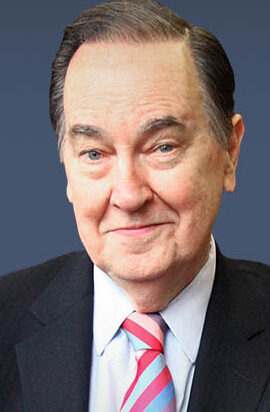 In decrying a comment by newly inaugurated New York Mayor Eric Adams that linked negative coverage to the lack of diversity in the press corps, syndicated columnist Cal Thomas (pictured) all but repeated the canard that the Black and Hispanic journalist associations discriminate by race. Thomas wrote, “All journalists should apply the same standard to all politicians regardless of their race, gender, or sexuality. It is why I have opposed professional associations made up solely of Black and Hispanic journalists. Such organizations suggest a different standard for covering the news and that is bad, not only for the profession, but for the individual reporter and opinion writer.” Joe Grimm and the late Rich Holden, both white journalists, responded in this column to a similar assertion in 2015.
In decrying a comment by newly inaugurated New York Mayor Eric Adams that linked negative coverage to the lack of diversity in the press corps, syndicated columnist Cal Thomas (pictured) all but repeated the canard that the Black and Hispanic journalist associations discriminate by race. Thomas wrote, “All journalists should apply the same standard to all politicians regardless of their race, gender, or sexuality. It is why I have opposed professional associations made up solely of Black and Hispanic journalists. Such organizations suggest a different standard for covering the news and that is bad, not only for the profession, but for the individual reporter and opinion writer.” Joe Grimm and the late Rich Holden, both white journalists, responded in this column to a similar assertion in 2015.
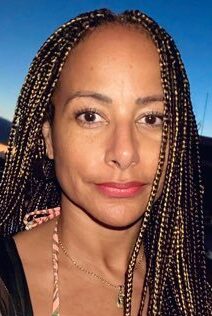 Amy DuBois Barnett (pictured), who has been editor-in-chief of Ebony, Teen People and Honey magazines, and deputy editor-in-chief of Harper’s Bazaar, has been named chief content officer of Outside Interactive, Inc., overseeing the company’s 30+ brands, including Outside magazine, the company announced Tuesday. She “joins Outside from Paramount, where she served as Senior Vice President and General Manager of BET Digital,” the company said.
Amy DuBois Barnett (pictured), who has been editor-in-chief of Ebony, Teen People and Honey magazines, and deputy editor-in-chief of Harper’s Bazaar, has been named chief content officer of Outside Interactive, Inc., overseeing the company’s 30+ brands, including Outside magazine, the company announced Tuesday. She “joins Outside from Paramount, where she served as Senior Vice President and General Manager of BET Digital,” the company said.
- The White House Correspondents’ Association board voted unanimously to strip of name of Merriman Smith from its signature prize in January after research revealed a more troubling side to the reporter once known to colleagues and presidents as ‘Smitty,’ ” Paul Farhi reported Thursday for The Washington Post. “The vote has not been publicly reported until now. After a review of its archives and other research, the organization’s board concluded that Smith — who was twice president of the WHCA — upheld restrictions on Black and female journalists, excluding them from membership in the National Press Club, and from attending the correspondents’ annual dinner.” Smith, who covered the White House for United Press International, is best known for his reports on the 1963 assassination of President John F. Kennedy.
No matter how far we come, we get reminded that it’s not enough. This is why I raised $111M for @serenaventures. To support the founders who are overlooked by engrained systems woefully unaware of their biases. Because even I am overlooked. You can do better, @nytimes. pic.twitter.com/hvfCl5WUoz
— Serena Williams (@serenawilliams) March 2, 2022
- Serena Williams was not happy when The New York Times used a photo of her sister, Venus Williams, when Serena should have been pictured.
- ” ‘Me and Virgil [Abloh] believed in Black design,” Kanye “Ye” West said, invoking the name of the late Louis Vuitton designer. “Now we need to invest in Black media.” West was speaking Feb. 6 before a think tank of 50 Black journalists and media executives at “The Future Brunch,” co-hosted by Hollywood Unlocked owner Jason Lee, Gail Mitchell reported Feb. 7 for Billboard.
- “Local TV giant Tegna is selling itself to a pair of private equity firms in a multibillion-dollar deal,” Alex Weprin and Georg Szalai reported Feb. 22 for the Hollywood Reporter. “Standard General and Apollo Global Management are teaming up for the deal, which will see them buy the company for $24 per share, Tegna said Tuesday. The private equity giants beat out a rival offer from Byron Allen’s Allen Media Group, which had partnered with Ares Management on the bid. Under the pact, the company will become the ‘nation’s largest minority-owned, woman-led broadcast group,’ the deal partners said. . . . Soo Kim, founding partner of Standard General, will serve as chairman. . . .”
- “Revolt said it is launching RBN Studios which will house its headquarters and studio business, in downtown Atlanta,” Jon Lafayette reported Feb. 24 for nexttv.com. “The Black-owned media company founded by Sean ‘Diddy’ Combs in 2013, said RBN Studios will produce news, talk and opinion programming for Revolt and other companies.”
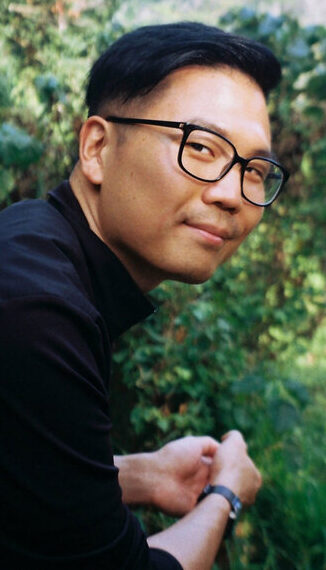 The National Press Photographers Association has named roving Los Angeles Times photographer Marcus Yam (pictured), who is now in Ukraine, as its photojournalist of the Year for large markets. Kent Porter of the Santa Rosa (Calif.) Press Democrat won in the small-market category. Yam was born and raised in Kuala Lumpur, Malaysia, and left a career in aerospace engineering to become a photographer, according to his bio. Yam said his goal is “to take viewers to the frontlines of conflict, struggle and intimacy.” He was interviewed about his Ukraine assignment last week by KTLA-TV in Los Angeles.
The National Press Photographers Association has named roving Los Angeles Times photographer Marcus Yam (pictured), who is now in Ukraine, as its photojournalist of the Year for large markets. Kent Porter of the Santa Rosa (Calif.) Press Democrat won in the small-market category. Yam was born and raised in Kuala Lumpur, Malaysia, and left a career in aerospace engineering to become a photographer, according to his bio. Yam said his goal is “to take viewers to the frontlines of conflict, struggle and intimacy.” He was interviewed about his Ukraine assignment last week by KTLA-TV in Los Angeles.
- ” ‘1A,’ a daily weekday national talk show produced by WAMU [in Washington] and distributed by NPR, announced the upcoming launch of ‘1A Remaking America’ – “a major, two-year reporting project covering the threats to America’s democracy,” the Corporation for Public Broadcasting, which is granting $750,000 for the project, announced Feb. 17. “In partnership with several public media stations across the country, this new collaborative project will focus coverage on the growing political divides throughout the country. . . . This reporting project is made possible by a grant totaling $750,000 from The Corporation for Public Broadcasting (CPB).” Confirmed participating stations include KVPR, Central California; WBHM, Birmingham, Ala.; KUNC, Greeley, Colo.; KMUW, Wichita, Kan.; Louisville Public Media and KUT in Austin, Texas.
- The National Association of Black Journalists said Feb. 17 it had met with executives at the Black News Channel following employee allegations of gender discrimination and a hostile work environment at BNC. “BNC management discussed a number of steps they say have been already taken and more they will pursue regarding employee charges. The specifics of those steps were disclosed to NABJ with the understanding that they were ‘off-the-record,’ ” NABJ said.
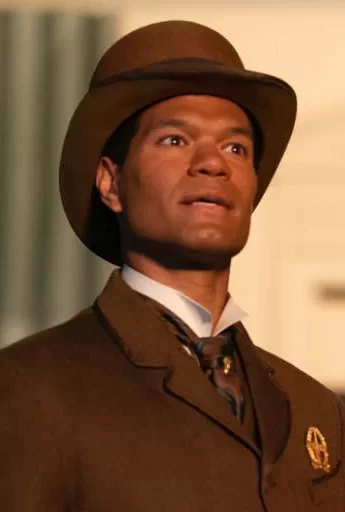 “The Gilded Age,” an HBO Max series featuring T. Thomas Fortune, one of the most prominent African American journalists of the late 19th and early 20th centuries, has been renewed for a second season. “Fortune was co-owner and editor of The New York Age, one of the leading black newspapers of his day, and was known for using his newspaper as a vehicle to speak out against lynching, black disenfranchisement and other injustices,” in the words of The New Jersey chapter of the Society of Professional Journalists. Actor Sullivan Jones (pictured) plays Fortune.
“The Gilded Age,” an HBO Max series featuring T. Thomas Fortune, one of the most prominent African American journalists of the late 19th and early 20th centuries, has been renewed for a second season. “Fortune was co-owner and editor of The New York Age, one of the leading black newspapers of his day, and was known for using his newspaper as a vehicle to speak out against lynching, black disenfranchisement and other injustices,” in the words of The New Jersey chapter of the Society of Professional Journalists. Actor Sullivan Jones (pictured) plays Fortune.
- “America’s Black Forum,” which has gone through several iterations and changes of ownership since its founding in 1977 by the late Glen Ford and Peter Gamble, then co-publishers of blackcommentator.com, is back. It is now hosted by Mark Morial, president and CEO of the National Urban League and available on YouTube. It describes itself as “a weekly syndicated lifestyle magazine TV show highlighting the best of Black America.”
- “
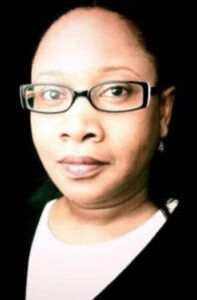 Award-winning journalist Andy Alford (pictured) has joined The Texas Tribune as director of editorial recruitment, training and career development,” Mariam Ahmed reported Friday for Talking Biz News. “Previously, Alford was at the Austin American-Statesman for over 23 years, where she held various roles, most recently serving as managing editor. Before that, she worked as a senior editor, local editor, assistant metro editor, special projects editor, urban affairs reporter, and education reporter. . . .”
Award-winning journalist Andy Alford (pictured) has joined The Texas Tribune as director of editorial recruitment, training and career development,” Mariam Ahmed reported Friday for Talking Biz News. “Previously, Alford was at the Austin American-Statesman for over 23 years, where she held various roles, most recently serving as managing editor. Before that, she worked as a senior editor, local editor, assistant metro editor, special projects editor, urban affairs reporter, and education reporter. . . .”
- “The Associated Press this week again urged Ethiopian authorities to release freelance journalist Amir Aman Kiyaro, who has spent more than 100 days in detention in the country without being charged,” Olafimihan Oshin reported Thursday for The Hill. “Kiyaro, a video journalist accredited to the AP, was detained by authorities on Nov. 28 in Ethiopia’s capital of Addis Ababa under the country’s war-related state of emergency powers. State media reported that Kiyaro was arrested and accused of ‘serving the purposes’ of a terrorist group by interviewing its leaders, the AP reported, citing federal authorities. Another journalist, Thomas Engida, was also arrested by Ethiopian authorities and is facing similar accusations. . .
- A March 1 analysis of business coverage of Africa by international media finds that it is centered on who can best profit from the continent’s business opportunities, with 70 percent of “coverage about business in Africa referencing China, the USA, Russia, France, and the UK, according to the newly launched The Business in Africa Narrative Report, by Africa No Filter and AKAS,” an audience strategy consultancy. Among other conclusions, ” Nearly 50% of articles in global media outlets reference South Africa or Nigeria, crowding out business stars like Mauritius, Namibia, and the Seychelles. Mauritius is the highest-ranking African country in the World Economic Forum’s Global Competitiveness Index.”
To subscribe at no cost, please send an email to journal-isms+subscribe@groups.io and say who you are.
Facebook users: “Like” “Richard Prince’s Journal-isms” on Facebook.
Follow Richard Prince on Twitter @princeeditor
Richard Prince’s Journal-isms originates from Washington. It began in print before most of us knew what the internet was, and it would like to be referred to as a “column.” Any views expressed in the column are those of the person or organization quoted and not those of any other entity. Send tips, comments and concerns to Richard Prince at journal-isms+owner@
View previous columns (after Feb. 13, 2016).
View previous columns (before Feb. 13, 2016)
- Diversity’s Greatest Hits, 2018 (Jan. 4, 2019)
- Book Notes: Is Taking a Knee Really All That? (Dec. 20, 2018)
- Book Notes: Challenging ’45’ and Proudly Telling the Story (Dec. 18, 2018)
- Book Notes: Get Down With the Legends! (Dec. 11, 2018)
- Journalist Richard Prince w/Joe Madison (Sirius XM, April 18, 2018) (podcast)
- Richard Prince (journalist) (Wikipedia entry)
- February 2018 Podcast: Richard “Dick” Prince on the need for newsroom diversity (Gabriel Greschler, Student Press Law Center, Feb. 26, 2018)
- Diversity’s Greatest Hits, 2017 — Where Will They Take Us in the Year Ahead?
- Book Notes: Best Sellers, Uncovered Treasures, Overlooked History (Dec. 19, 2017)
- An advocate for diversity in the media is still pressing for representation, (Courtland Milloy, Washington Post, Nov. 28, 2017)
- Morgan Global Journalism Review: Journal-isms Journeys On (Aug. 31, 2017)
- Diversity’s Greatest Hits, 2016
- Book Notes: 16 Writers Dish About ‘Chelle,’ the First Lady
- Book Notes: From Coretta to Barack, and in Search of the Godfather
- Journal-isms’ Richard Prince Wants Your Ideas (FishbowlDC, Feb. 26, 2016)
- “JOURNAL-ISMS” IS LATEST TO BEAR BRUNT OF INDUSTRY’S ECONOMIC WOES (Feb. 19, 2016)
- Richard Prince with Charlayne Hunter-Gault, “PBS NewsHour,” “What stagnant diversity means for America’s newsrooms” (Dec. 15, 2015)
- Book Notes: Journalists Follow Their Passions
- Book Notes: Journalists Who Rocked Their World
- Book Notes: Hands Up! Read This!
- Book Notes: New Cosby Bio Looks Like a Best-Seller
- Journo-diversity advocate turns attention to Ezra Klein project (Erik Wemple, Washington Post, March 5, 2014)
When you shop @AmazonSmile, Amazon will make a donation to Journal-Isms Inc. https://t.co/OFkE3Gu0eK
— Richard Prince (@princeeditor) March 16, 2018

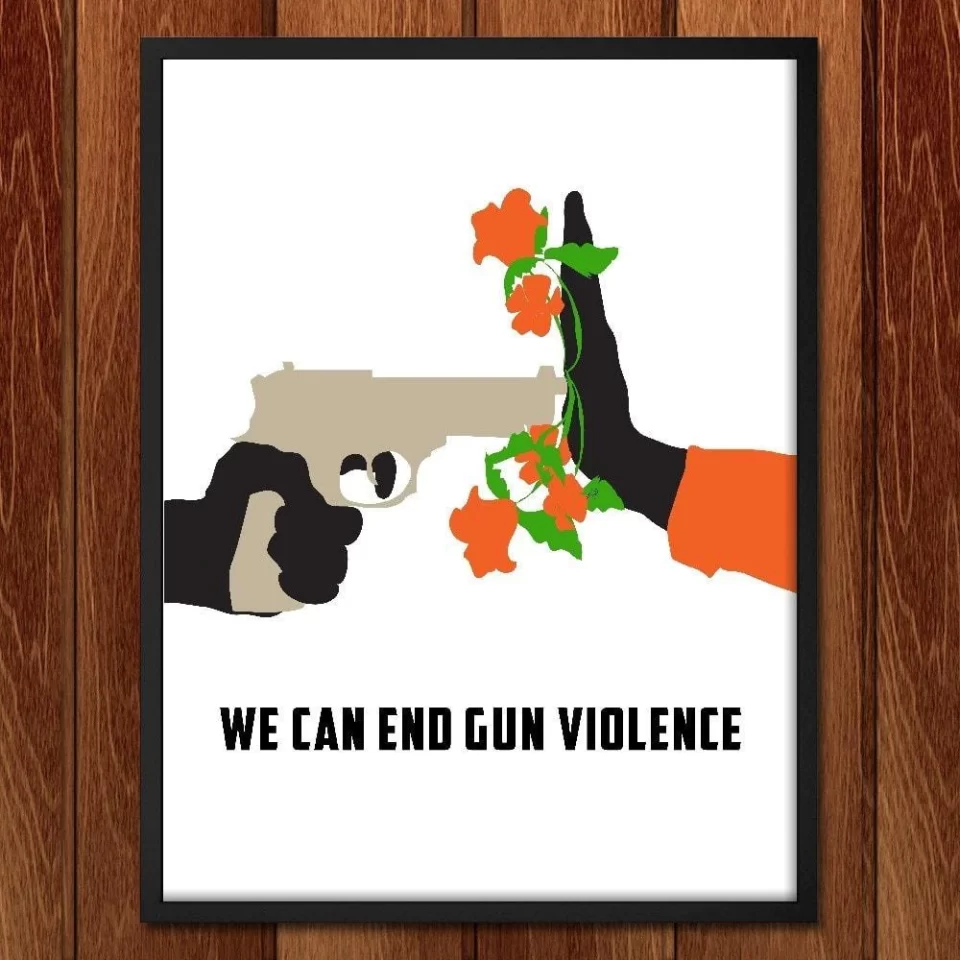
1 comment
Thanks Richard for highlighting this tragic loss “ ‘She wasn’t much of a going-out kind of person at all,’ Maurice Jenkins said.
Not a going out person ! In our generation 90% of us were “going out persons” and most of us did not fear or worry about getting caught in shootouts .
I was a working musician in several bands that played clubs up and down the East Coast from MD to NC and I know for a fact there was never a shooting incident in or near any of the clubs or bars I played in – fights yes but not a single shooting .
But in 2022 America you can be shot in places and ways that were nearly unheard of 50 years ago :
Journalist -out in public
People in Church
Attending Funerals
Kids in Car seats on the Freeway
Random victim of a nutjob “roadrager” who thinks you are driving too slow , too close
7year old standing in your yard
HS student just going to class
All the above incidents are among the too many -that I’ve read about happening in recent months .
America writ large , no longer cares – beyond a week or two -if caring is measured by going beyond funerals and memorials and engaging in preventative or even mitigative measures .
We don’t even push our politicians to act on an ongoing basis .
As a nation , we are the actions we take and choose not to .
No news organization polls on this question : Have you stopped going to places or public events to concern about gun violence ?
I am generally not a fearful person ,quite the opposite in fact, but even before Covid , I’d stopped going to places
and to events I once would have .
So am I alone in this reaction to our gun violence nation ? Maybe I am -but we have no way of knowing -because no one is measuring the impact of gun violence on our people’s attitudes . The closest proxy we may have in measuring the impact of gun violence on public attitudes -is defensive gun sales increases – but that’s an imperfect proxy for a host of reasons , including people who change but don’t arm themselves .
In closing , I’m certain that our peers 50 years ago didn’t categorize ourselves as “going out person ! ” or not . Everyone I knew went out at least occasionally- and thought nothing of it and did not regard it as high risk behavior , beyond drinking too much
Greg Fuller
Detroit.